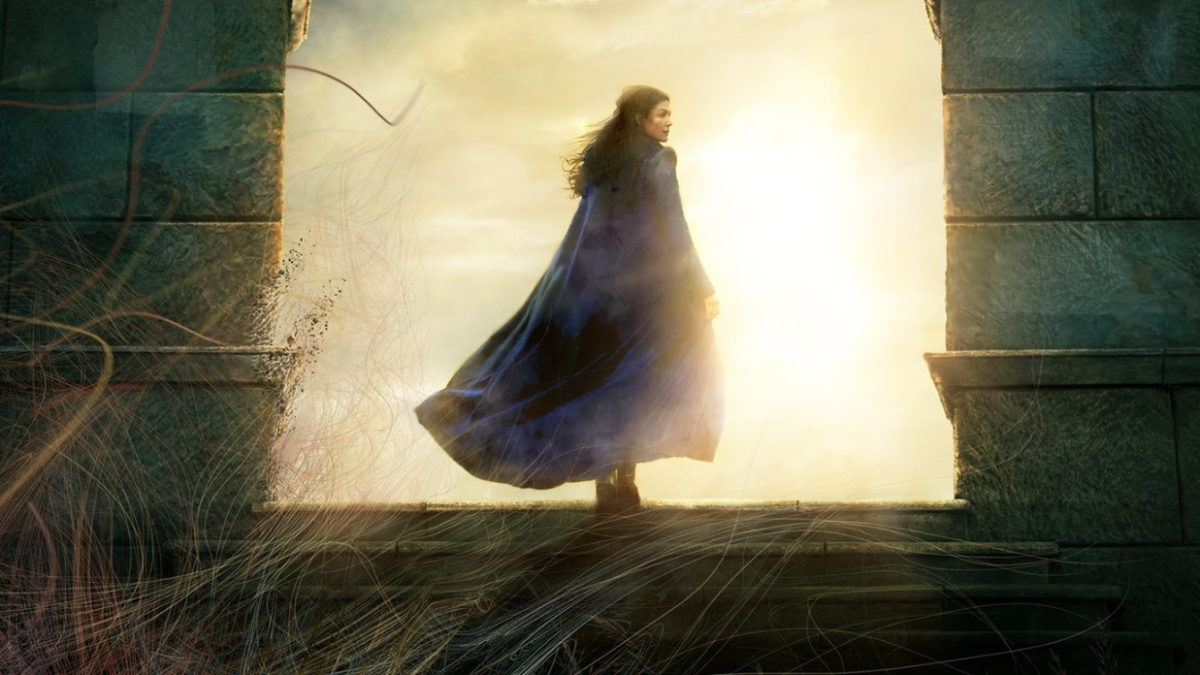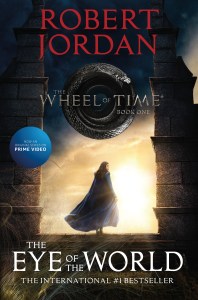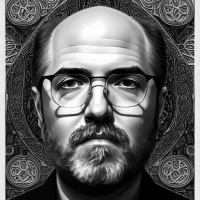The Eye of the World: A Tolkien-Like Journey with a Twist
The first novel in The Wheel of Time series pays homage to Tolkien’s The Lord of the Rings, but it quickly puts its own spin on the hero’s journey.

This article is sponsored by 
With The Wheel of Time set to premiere on Prime Video, some fantasy fans may decide they’d like to dip their toes into the waters of the Robert Jordan novels upon which the show is based, and although Book 1, The Eye of the World, may seem daunting at nearly 800 pages, it’s fittingly (and intentionally) the most accessible story in the 14-book series. Jordan based the book’s early story structure on that of J. R. R. Tolkien’s The Lord of the Rings trilogy, creating a recognizable pattern that would pull in readers while simultaneously building a wholly unique world of his own. Thirty years later, in a pop culture landscape in which Lord of the Rings has become even more well-known than it was in 1990 (when Eye of the World was first published by Tor Books), Jordan’s narrative strategy is still paying off.
In the prologue to his tenth book in the series, Jordan wrote: “In the first chapters of The Eye of the World, I tried for a Tolkien-esque feel without trying to copy Tolkien’s style, but that was by way of saying to the reader, okay, this is familiar, this is something you recognize, now let’s go where you haven’t been before. I like taking a familiar theme, something people think they know and know where it must be heading, then standing it on its ear or giving it a twist that subverts what you thought you knew.”

Right from the opening scene of The Eye of the World, the parallels are obvious: a dark rider is seen following a young, naive soul named Rand al’Thor, who is unaware of how important he is. Like Frodo, Sam, Merry, and Pippin, Rand and his similarly named friends Mat and Perrin live in a small town far removed from the larger political conflicts of this world. Both openings feature a celebration with entertainment provided by a wise man who will become important to the young ones on their journey. It’s a comfortable setting with a feeling of impending disruption.
The similarities don’t end with simple plot points. The larger historical context of both worlds places the current circumstances in a so-called “Third Age,” with the first being a time of legends and the second featuring the defeat of a purely evil being who is now on the rise again. Both Dark Ones command inhuman armies and have powerful generals with extremely sinister powers of their own.
Even characterizations and settings share certain descriptive likenesses. In both stories, a powerful magic-user takes the young heroes under wing, and they are assisted by a tracker of sorts who turns out to be a king awaiting a throne. Each group travels in the opening chapters to an ancient, dead city crawling with curses, followed by a pitiful creature in rags. The parallels really are uncanny, which makes it all the more surprising that The Eye of the World, and the larger The Wheel of Time series, end up presenting one of the most unique examples of worldbuilding in fantasy fiction, and would go on to inspire generations of fantasy writers in their own right.
Nowhere else has magic been presented as a binary power, accessed differently by men than by women. The Eye of the World presents the so-called One Power as a source that can be channeled into spells rather than cast out of nothing. The women who can channel are organized into an organization called the Aes Sedai, which uses its power to influence politics and the course of history. Meanwhile, the male source has been tainted by the Dark One during his defeat in the previous age, causing male channelers to be driven mad after continued use of the One Power. Although there are hints of Tolkien’s corrupting rings of power here, the magical system in The Wheel of Time is its defining factor.
Whereas the hobbits of Tolkien’s work find heroism through personal fortitude and friendship, the heroes in The Eye of the World are clearly growing into their own significant power, all tied into the tapestry of fate known as the Pattern. Rand provides a central point of view in the first novel and learns about men who channel during his journey. His friend Perrin encounters a man who has an ability that it turns out he shares, and Mat makes a decision that takes him down a darker path, inexorably leading them to positions of influence in later books.
The cultures in The Eye of the World also seem to be more widely varied than those of Middle Earth. Jordan’s work does have the requisite map on the inside cover, but the vastness of the continent is illustrated by how foreign each new civilization encountered is. Even individual cities have their own identities some helpful, others not so much as the travelers make their way along their quest.
The quest itself is also quite different. Instead of traveling to a volcanic mountain to destroy a ring, the heroes of The Eye of the World must travel into a blighted land to find the titular eye, a pool of untainted male power that can be used to mend any fractures in the seal imprisoning the Dark One. In the heroes’ way are the Forsaken, who are like the Ringwraiths of Tolkien’s world but who each must be defeated in turn to defeat the ultimate evil.
The fact of the matter is that reading The Eye of the World doesn’t feel like a Tolkien knockoff or even an overt tribute. Instead, the familiar narrative patterns reveal a completely different picture with a massive cast of characters, each with their own personality, who interact in a deeply rich world influenced by prophecy, religion, legend, and politics that feels nothing like Middle Earth. But the homage is still there, and not only has it been acknowledged by the author; it’s also a surefire way to bring in new fans for this modern classic either separate from or alongside the television adaptation.
You can find out more about The Eye of the World, including where to buy it, here.
